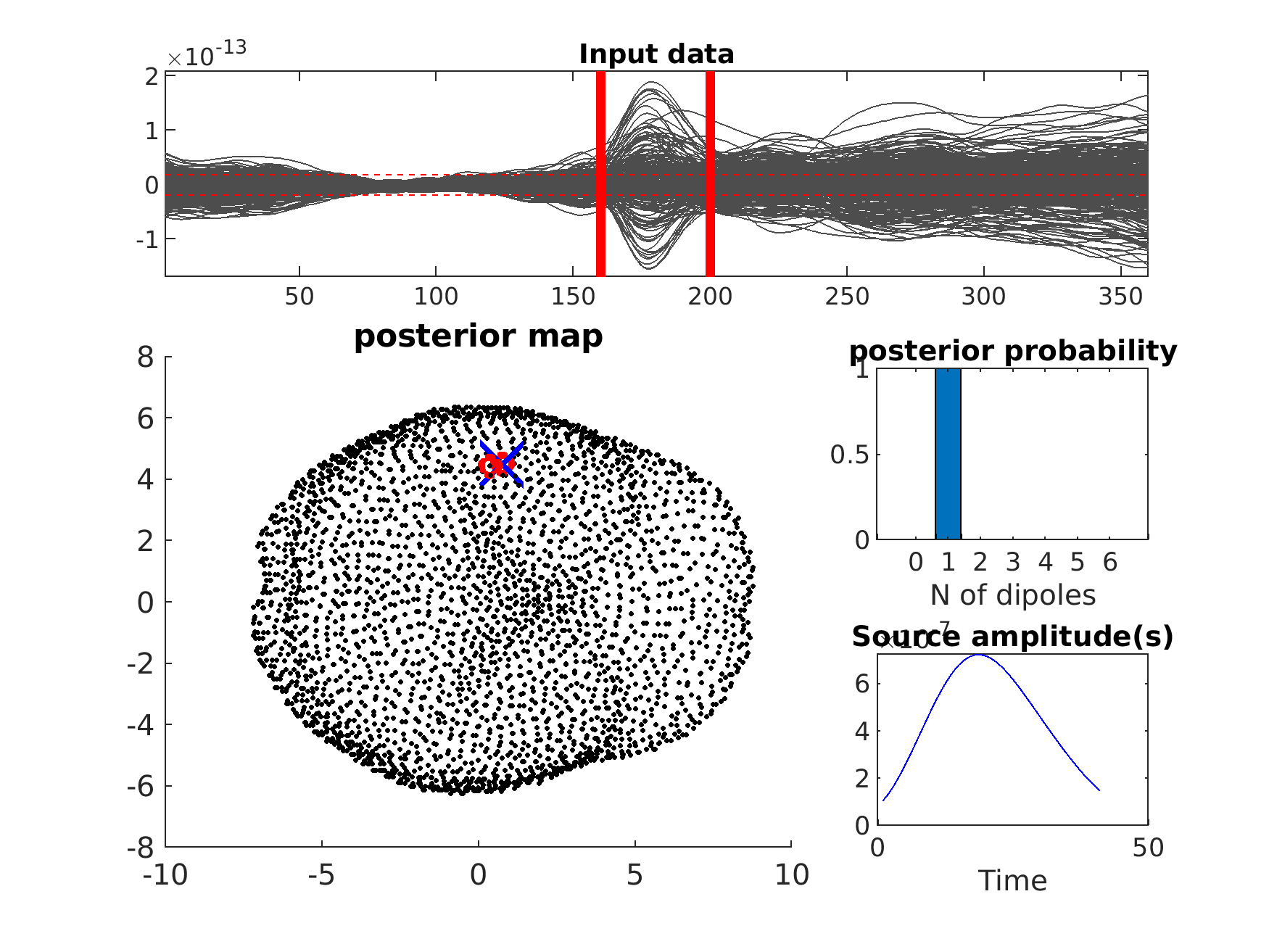Run SESAME¶
This script runs the SESAME algorithm on the real somatosensory evoked field dataset described in the beamformer tutorial of Fieldtrip.
The main input of the algorithm are the lead field, the source space and the data. The other parameters are optionals and
can be specified in the cfg variable.
The output of SESAME, the posterior, can be visualized by calling the inverse_SESAME_viewer() function which visualizes
the data with the time window analyzed, the posterior of the number of sources, the cortical posterior probability map condtioned on the number of estimated dipoles,
and the times series of the estimated dipoles.
clc
%% Load sample variables:
load('vars_for_SESAME.mat');
%% set optional input parameters
cfg.n_samples = 50; %number of samples
cfg.t_start = 160; %initial time pont of the data
cfg.t_stop = 200; %final time pont of the data
cfg.evol_exp = 0; %number of iterations (if > 0), or adaptive number of iterations (if == 0)
cfg.noise_std = 1.2e-13; %estimated noise on the data; if not specified it is self estimated by the algorithm
cfg.verbose = true;
%% run SESAME
posterior = inverse_SESAME(data, LF, sourcespace, cfg);
%% save result
TIME = clock;
save(strcat([date,'_',num2str(TIME(4)),num2str(TIME(5)),num2str(TIME(6)),'_SESAME.mat']),'posterior');
%% visualization
inverse_SESAME_viewer(posterior);

Plot of the SESAME output provided by inverse_SESAME_viewer function¶
Download script: script_run_SESAME.m